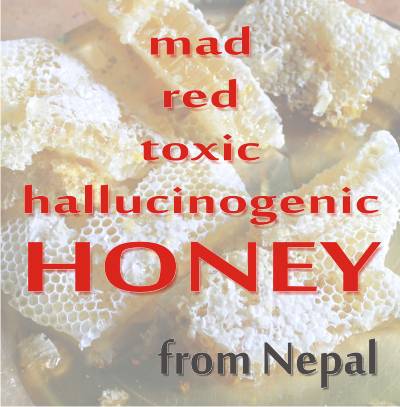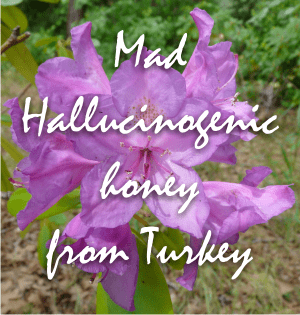There are some substances which are toxic to humans but have no effect on bees. If bees get their nectar from flowers containing these substances, the resulting honey can be a toxic honey, or even psychoactive to humans. Among those flowers:
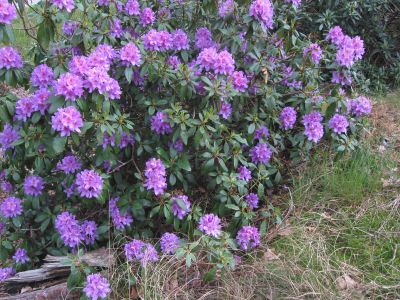 – Rhododendron ponticum (aka Azalea pontica) has alkaloids which are very poisonous to humans. Not for the bees. History tells us through Aristotle, Xenophon, Strabo, that in the first century, the Roman troops were poisoned with this type of honey, whey they were attacking the Heptakometes in Turkey. They became delirious and nauseous and easy to be defeated.
– Rhododendron ponticum (aka Azalea pontica) has alkaloids which are very poisonous to humans. Not for the bees. History tells us through Aristotle, Xenophon, Strabo, that in the first century, the Roman troops were poisoned with this type of honey, whey they were attacking the Heptakometes in Turkey. They became delirious and nauseous and easy to be defeated.
– Andromeda flowers, pieris japonica or lily of the valley shrubs contains  grayanotoxins, which is very toxic, it paralyzes the limbs, the diaphragm and death comes instantly.
grayanotoxins, which is very toxic, it paralyzes the limbs, the diaphragm and death comes instantly.
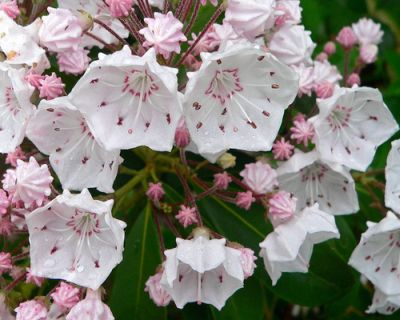 – Kalmia latifolia, aka calico bush, mountain llaurel, spoon-wood, ivybush, sheep laurel, lambkill, clamoun, a beautiful evergreen shrub found in eastern United States, which is also the state flower of Connecticut and Pennsylvania, includes grayanotoxin and arbutin, toxic to animals like horses, goats, cattle, deer, monkeys and humans. The ingestion causes gastrointestinal irritations, hemorrhage and death.
– Kalmia latifolia, aka calico bush, mountain llaurel, spoon-wood, ivybush, sheep laurel, lambkill, clamoun, a beautiful evergreen shrub found in eastern United States, which is also the state flower of Connecticut and Pennsylvania, includes grayanotoxin and arbutin, toxic to animals like horses, goats, cattle, deer, monkeys and humans. The ingestion causes gastrointestinal irritations, hemorrhage and death.
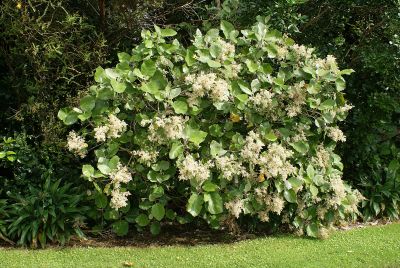 – Wharangi bush, melicope ternate, from New Zealand, also produces fatal toxins. Bees gather honeydew produced by the vine hopper insects, which are feeding on those tutu plants. This introduces the poison tutin into honey. But since December 2001, the beekeepers have reduced the risk of producing toxic honey, by closely monitoring tutu, hopper, and foraging conditions. To reduce the risk of tutin poisoning, people should not eat honey taken from the risk areas of New Zealand.
– Wharangi bush, melicope ternate, from New Zealand, also produces fatal toxins. Bees gather honeydew produced by the vine hopper insects, which are feeding on those tutu plants. This introduces the poison tutin into honey. But since December 2001, the beekeepers have reduced the risk of producing toxic honey, by closely monitoring tutu, hopper, and foraging conditions. To reduce the risk of tutin poisoning, people should not eat honey taken from the risk areas of New Zealand.
-Datura plants in Mexico and Hungary
-Belladonna flowers and henbane from Hungary
-Serjania lethalis from Brazil
-Gelsemium sempervirens from American Southwest
-Coriaria arborea from New Zealand
-Hyoscyamus niger l. – the predictions of the High Priestess in Oracle of Delphi were induces by the toxins released from this plant.
-Datura Inoxia from Poland
-Narcotic opium honey – also results from areas where there are opium poppy cultivation.
Also read all Types of honey covered in this site.
! Manuka honey can be toxic!!
It can be contaminated from a plant that grows near the manuka bushes. It’s actually impossible to stop bees from harvesting it, too. A new dispute on manuka honey market: Is it toxic or not?
Which is why the New Zealand’ regulations mention the tests needed to be done in order to insure a non-toxic honey for population. Please read How is manuka honey tested? Can we trust those tests?
Is fermented honey toxic?

In South Africa, in 1945, a bird was found intoxicated, with an abnormal flight, after it had consumed honey fermented in the sun. The honey was a good natural product until it fermented. After that, the scientists called it toxic.
On the other hand, people produce mead – a fermented alcoholic beverage, made of honey, water and yeast, also known as meadhing. The ancients called it “nectar of the gods”. And this is surely not toxic. 🙂
Read more about mead:
· Do you want a homemade mead recipe?
· This 9000 years old booze is back on top. Let’s all mead now!
· From where to buy mead wine?
Other toxic honeys:
· Mad Honey! Are you high? – a specific honey with real psychedelic qualities, produced in Turkey.
· Viper’s Bugloss honey – potentially hepatotoxic if consumed in large quantities.
********************************
******************************************
References and picture credit:
http://en.wikipedia.org/wiki/Honey
http://en.wikipedia.org/wiki/Kalmia_latifolia
http://gardening.lohudblogs.com/2009/04/24/japanese-pieris-or-andromeda/
http://www.terrain.net.nz/friends-of-te-henui-group/table-1/rangiora-new.html

